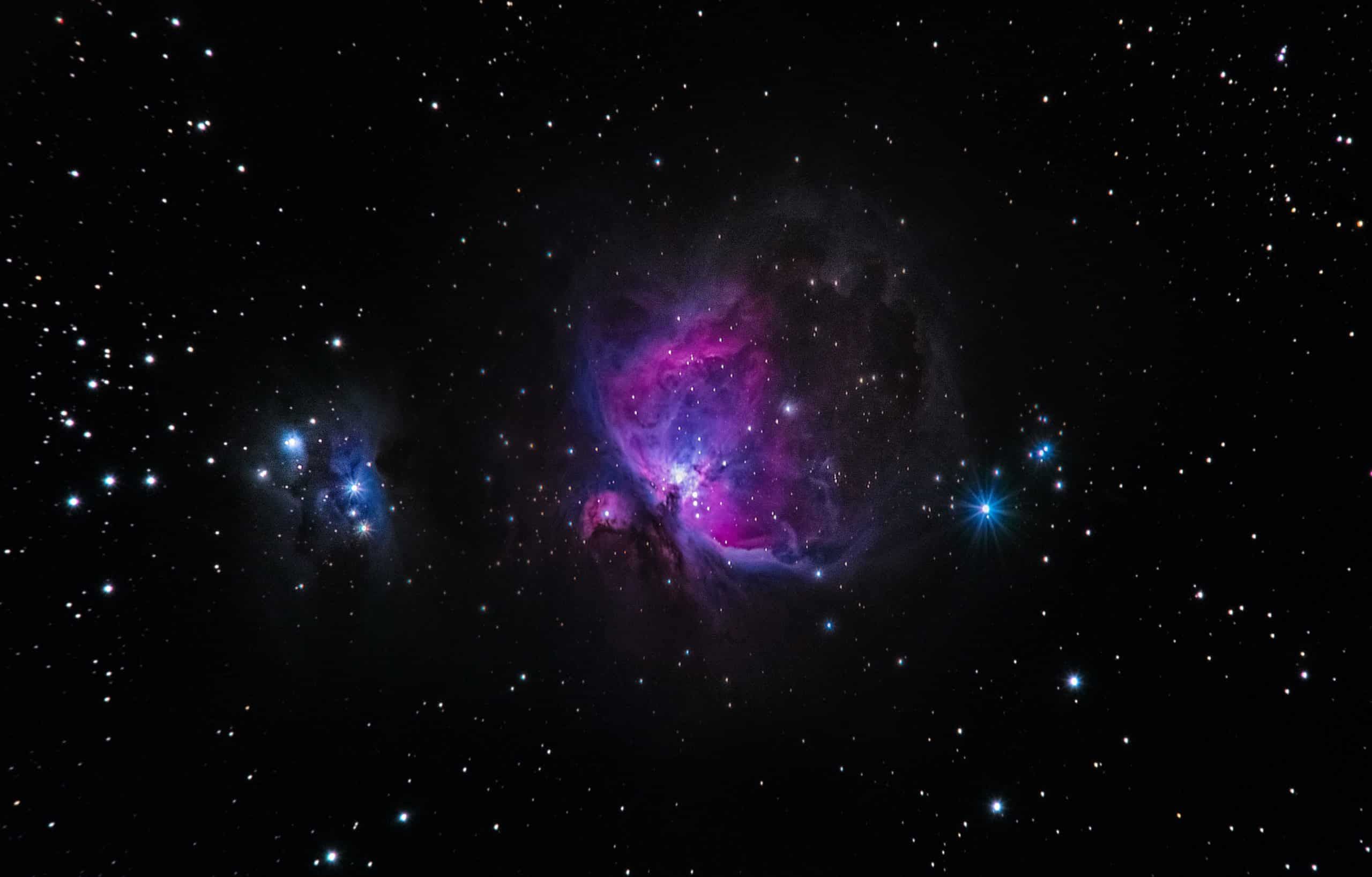The Stars Sing Praise to God

For many years, scientists have heard sounds from outer space. After much research, scientists recently have discovered that the stars of outer space can sing. Long ago, the Bible describes God mentioning this event in Job 38:4 & 7: “Where wast thou when I laid the foundations of the earth? When the morning stars sang together, and the sons of God shouted for joy?”
When God created the Earth and the universe, he tells us, “The morning stars sang together, and the sons of God shouted for joy.”
This passage in the first part of verse seven has often been interpreted in a figurative way. Usually, this part of verse seven, “when the morning stars sang together,” was taken to mean, this was a title and reference to angels singing as God created the Earth and universe.
A literal interpretation of this part of the verse would be, “this is the sound of stars singing praise to God in the morning,” and the stars could be heard in the pre-Flood world through the reception and amplification of the firmament, the canopy over the Earth.
The passage continues in verse seven, “and the sons of God shouted for joy.” This is usually interpreted literally as, “this is a reference to the innumerable host of heavenly angels who were present in heaven when God made the Earth and universe, and they sang and shouted for joy at seeing the majestic God creating such a beautiful, astounding vast creation.” Certainly, the angels praised God for His glorious creation.
Another possibility of the phrase, “and the sons of God shouted for joy,” could be interpreted as this happening literally over a period of time, rather than happening at the moment of creation. Here, the line of believers from Adam through Seth to Noah would see the pre-Flood world reflecting the glorious splendor of God and hear the beautiful sounds of the stars each morning resounding as an orchestra of brilliant music and light. They would burst forth with song, bringing forth singing and shouting praise to God in antiphonal voices of music.
Dr. Carl Baugh of the Creation Evidence Museum of Texas explains, “NASA discovered some years ago that not only are the stars giving off radio waves, but some of the stars are giving off one million times as much radio energy as is produced in our entire Milky Way galaxy. Stars throughout the universe are emitting radio wave energy. NASA discovered to their astonishment that not only are these stars emitting radio waves of energy, but that there is music being emitted in a major key. The music being emitted from these stars is harmonious. NASA compared the music being emitted by these stars to the instruments of an orchestra that are in tune with each other.”
Because God created a firmament that was suspended over the Earth as a crystalline canopy that attracts, resonates and amplifies the sounds of the stars, as well as working like a biosphere to increase the air pressure, oxygen contents, and block harmful radiation, the pre-Flood Earth could hear the sounds of the stars more intensely.
Even Particles Have a Pitch
NASA has recently made a massive collection of audio files from many decades of space exploration freely available on the Internet on their website. By using this vast collection of recordings, we can hear the voices of the many missions of space programs as they occurred.
We can hear the voices of the astronauts and their respective command control center workers as they progressed through various stages of experiments, actual blastoffs and landings, and the voices recorded from the moon and outer space by our astronauts. They also have made the recordings of many exploratory space craft available and their subsequent recording of the planets of our solar system as they passed them on their way to the greater massive expanse of space.
Unusual sounds are heard that sometimes sound eerie, sometimes sound very futuristic and sometimes sound like sounds from Earth. For instance, the sound of escaping plasma has been recorded which sounds like birds singing. The various sounds are usually extremely low frequencies or are high frequencies that sound like the satellites are moving through air, but the plasma sounds are often closer to our hearing range.
The dust particles of Saturn have been recorded when passing through the rings of Saturn, and a powerful earthquake has been heard and recorded when passing Mars.
The Stars Sing in a Major Key
It is interesting to note that scientists hear these respective sounds from the stars, not just as a random blur of sound, but as a tone modulating in a major key.
Astronomers say they have heard the sound of a black hole singing. And what it is singing, and perhaps has been singing for more than two billion years, they say is a B flat – a B flat 57 octaves lower than middle C.
The “notes” appear as pressure waves rolling and spreading as a result of outbursts of a supermassive black hole through a hot thin gas that fills the Perseus cluster of galaxies, 250 million light-years distant. They are 30,000 light years across and have a period of oscillation of 10 million years.
“The black hole is playing the lowest note in the universe,” said Andrew Fabian, an X-ray astronomer at the Institute for Astronomy at Cambridge University in England. Dr. Fabian was the leader on an international team that used NASA’s Chandra X-ray Observatory to detect the black hole’s notes as ripples of luminosity in the X-ray glow of the cluster. Last year, Dr. Fabian and his colleagues obtained a new long-exposure image of the Perseus cluster which showed waves moving outward like ripples on a pond from the central bubbles.
If the black hole blows such bubbles continuously and it is this energy that is keeping Perseus hot, then the black hole in Perseus must have been playing B flat for a long time, said Dr. Fabian. “It’s the longest-lasting symphony we know of,” said Dr. Bruce Margon, an astronomer at the Space Telescope Science Institute.
This parallels the normal Earth conditions of hearing sounds with overtones that ring out our major chord system, using our modern tuning and equal temperament systems, and these sounds occur in a collection with order and design, and not in an extremely random fashion, as might be expected.
Stars Are in Color and the Color Is the Pitch of the Sound
When presenting the concept of data sonification, one common characteristic is that the brighter the star, the louder is the music. A brighter light would generally be from a more powerful event and thus would naturally be louder.
It has also been known to researchers that certain music tones are directly related to colors of light. In other words, a certain note would represent a particular color.
Today, with the technology of NASA’s space observatories, we can hear the stars in a reproduction or adjustment of recorded low frequencies through data sonification, with a brilliant and imaginative result from the complex process. But we also know that it is possible to reproduce the exact melodic sound of the stars by their colors and show interpretive musical dynamics by their brightness.
Perhaps, at some future time, we can have an actual recreation of the full spectrum of the sound of the stars with the reproduction of their music through all the spectrums of light. Because we know the tones of the stars by their color and the brightness to determine their loudness, we can eventually reproduce the same particular sounds and know even more exactly how the stars sound when they sing.
The Music of the Spheres
The stars of the universe do sing and resonate like an orchestra! They have been singing in chorus since their day of creation. We can detect these sounds and realize that all of Earth’s inhabitants can relate to them because they resonate in a major key. This follows the principles of the overtone series, and they are in tune, equal temperament, logical and designed order and in harmony with our natural way of hearing.
These space sounds sing in harmony with our common way of hearing by people worldwide using extended tertian harmony, the system of music harmony upon which Classical music and most hymns are based.
Therefore, the heavens are telling the glory of God!
As the stars, as heaven’s united grand orchestra, would sing praise to God each morning, righteous believers could burst into song, humming and singing with all of the world around them. All of the earth could hear creation’s praise.
They could hear the desert sing, the mountains rejoice, the trees of the field clap their hands and the hills sing joy to God. They could hear the birds respond in brilliant praise, they could hear the song of marine life like the whales and dolphins, they could hear the chirp of the insects, they could hear the sounds of the mysterious dinosaurs, and they could hear the roar of the lions singing praise.
Can you imagine the response of the people before the Flood as they heard the daily praise of heaven’s orchestra, the dazzling stars of the skies? Glorious!
To read more from Heaven’s Orchestra, purchase the book here.
More from Prophecy in the News Magazine
This site uses Akismet to reduce spam. Learn how your comment data is processed.




Leave a Reply